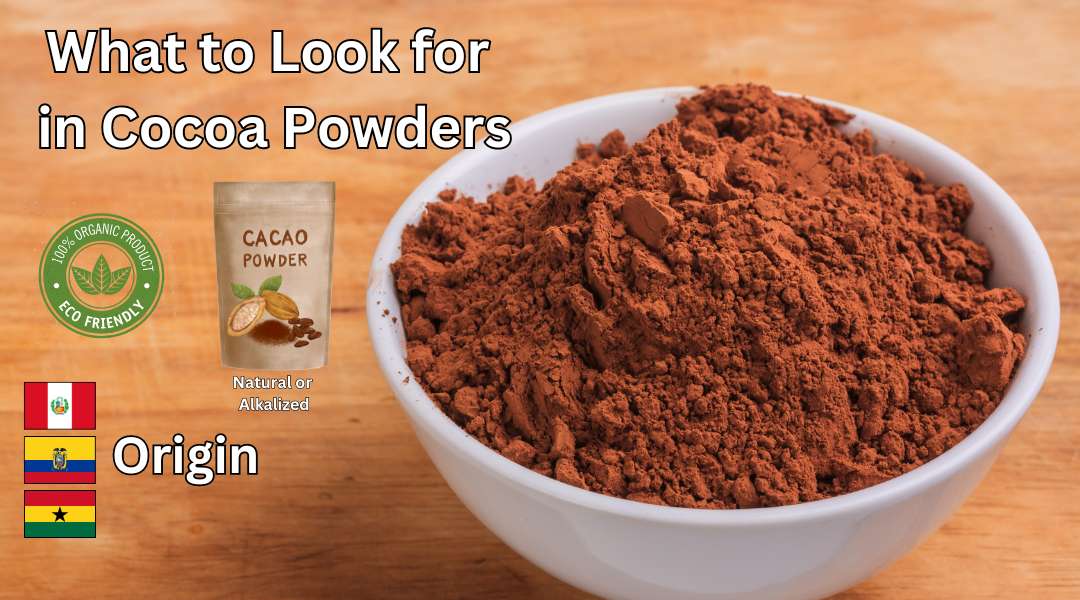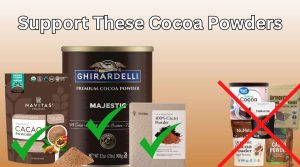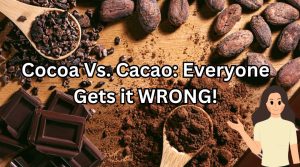How to buy a good cocoa powder.
When you visit Amazon or any major e-tailer, you’re going to see hundreds of cocoa powders. Every cocoa powder is going to tell you how organic they are and what sets them apart from the other hundreds of cocoa powders. Since you most likely don’t have the time and desire to research hundreds of companies, you probably just buy whatever is most reviewed, which is fair. However, if you refer to this previous post about why buying cocoa powder is such a headache, you’ll realize that you’re being funneled into buying the lowest quality and highly contaminated powders for an exorbitant price to its quality.
There’s a surprising number of qualities that separate cocoa powders from one another that most consumers don’t know exist. Similar to coffee, while cacao hasn’t quite caught up yet, regions do matter and so do roast levels and how well the cacao was fermented. And not only do those early stage characteristics matter, the processing matters quite a lot, too. Cacao has many more stages where the quality can affect the end product. 99% of consumers will have no preference of their cocoa powder, but as cacao quality starts improving we’re seeing a new movement to improve flavor and the sustainable sourcing of cacao beans.
Here’s some “cacao profiles” that can help you find a cocoa powder that fits your preference that you may not have known even existed!
Natural Cocoa Powders
Admittedly, this one is known to people who bake a lot. A natural cocoa powder is one that has not been processed any further than being a pressed cacao product. Natural and alkalized cocoa powders are not interchangeable. Natural cocoa powders are typically not advertised as natural due to the regulatory and advertising headaches, so most will be simply labeled as just cacao powder or non-alkalized. The omission of “alkalized” or “dutch process” are indicators it’s natural; however, you should still read the packaging to be sure. Natural cocoa powders contain more fat and will usually be brighter in color than alkalized variants, giving them a shimmering brown color and even sometimes reddish hue. Rule of thumb is natural cacao powders are around 20% or more of cocoa butter, while alkalized is usually below 12%.
Alkalized Cocoa Powders
Similar to natural cocoa powders, most bakers will know that alkalized cocoa powders have a stronger chocolate flavor and has reduced acidity. Alkalized cocoa powders can range from light, medium, and heavily alkalized and both color and taste will reflect these variations. Alkalized cocoa powders will also contain lower fat content. As seen above, an alkalized cocoa powder can sit at about 12% and there’s even fat-free versions. When it comes to drinking hot cocoa, there’s really no right answer as each person has their own preference. Alkalized cocoas will have a stronger chocolate flavor but will lose the natural flavor notes of the cacao. If you mix with milk and cream, the natural flavor of cacao powder would be lost anyway.
Black Cocoa Powders
Black cocoa powders are heavily alkalized and look pretty cool. They make chocolate products especially dark and is even sometimes used as a healthier alternative to artificial food coloring in some foods. Oreo cookies are an example of a product using exceptionally dark cocoa powder. Black cocoa powders are heavily alkalized almost to the point of being nearly fat-free in some instances. The primary use for black cocoa powders is almost exclusively going to be for baking and emphasizing color. Drinking black cocoa powder is certainly an option, but it’ll be far from what you’d expect a cocoa powder to taste like. It will have an intense Oreo flavor which is desirable by many people, and dark cocoa powders pair very well with milk and other creamy additives.
Single Origin
This descriptor can easily be manipulated and misleading, but typically it means the cacao beans came from the same producer or farm. Many companies will source from a “single origin” but come to find out it’s just from a greater geographical area mixed with beans from many countries or regions within that country. You mostly see single origin with coffee but cacao is rapidly catching up to third wave coffee. Twenty years ago, no one cared where coffee came from but now there’s more emphasis on how and where it’s sourced. The exact same culture around cacao is upon us, giving us much great range of flavors and regions to support. Most cacao is being sourced from Africa and South America, but other regions are the Dominican Republic, Indonesia, China, Australia, and parts of Asia.
Organic/Non-Organic
Certified organic is a common label that is important to many consumers. However, the requirements for organic are very low and very expensive. It’s becoming common in the coffee and cacao industry that the higher quality farms opt to forego certification. Organic does not regulate slave labor nor does it indicate quality of the cacao bean. It only means certain pesticides weren’t used. And only a handful of pesticides at that, which is why many organic agricultural products are no healthier (often times less healthier) than non-organic. But, while industry enthusiasts usually do not care about organic labeling, many consumers still do so this is still an option to choose from.
Nacionale, Criollo, & Trinitario Cacao Beans
The holy trinity of cacao beans. Known as the ancient beans, these variants can trace their roots back to many thousands of years ago and are considered the pure, original cacao from the Aztec times. (Note: The Nacionale bean is a Criollo variant but has gained enough of a reputation that it is independently sought out.) When you see these names or start searching for them, you know you’ve crossed into specialty cacao territory. If you’ve made it to the point of buying Nacionale, Criollo, and Trinitario, chances are you either want to seriously taste the unique flavor notes of the cacao via a beverage or you have a very specific baking flavor you’re trying to achieve. Over 85% of cacao beans are Forastero, which is to say all the cacao you’ve ever consumed. Nacionale, Criollo, and Trinitario don’t usually end up in low-quality commercial products as they are highly marketable features and quite rare to come by and are highly cared for due to just how rare they are. You buy these beans when you really want to treat yourself or as a gift to someone. You can consume these cacao beans as much as you want, but they come at a significantly higher price tag than even the most high quality Forastero beans (usually).
This Covers Most Unique Cocoa Powder Categories
While there are still going to be some other cocoa powder traits and variations, almost every single cocoa powder will be covered under these previously listed qualities. There’s many labels such as rainforest alliance, non-gmo, gluten-free, etc but I feel that for the time being these qualities don’t impact the product enough to be included. You should first look for what you want in a cocoa powder then see if it meets your labeling criteria. Almost all ethically sourced cacao products will fall under many handfuls of positive labeling and if they don’t, sometimes they’ll explain why (such as why many farms forego organic certification). I’ll update the list if I feel there’s more uniquely identifiable cocoa powder traits but this should get you pointed in the right direction when considering a cocoa powder for you. Thank you for reading and happy purchasing!




